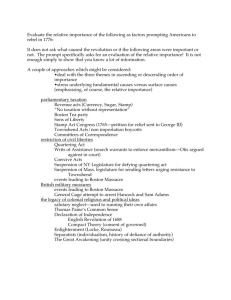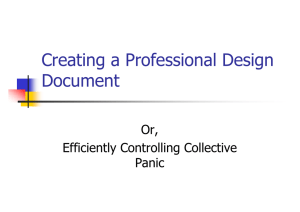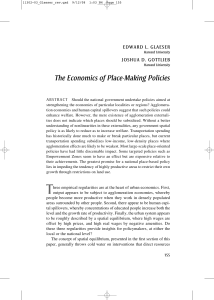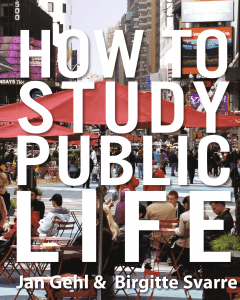Paper #3- Observation Paper
advertisement
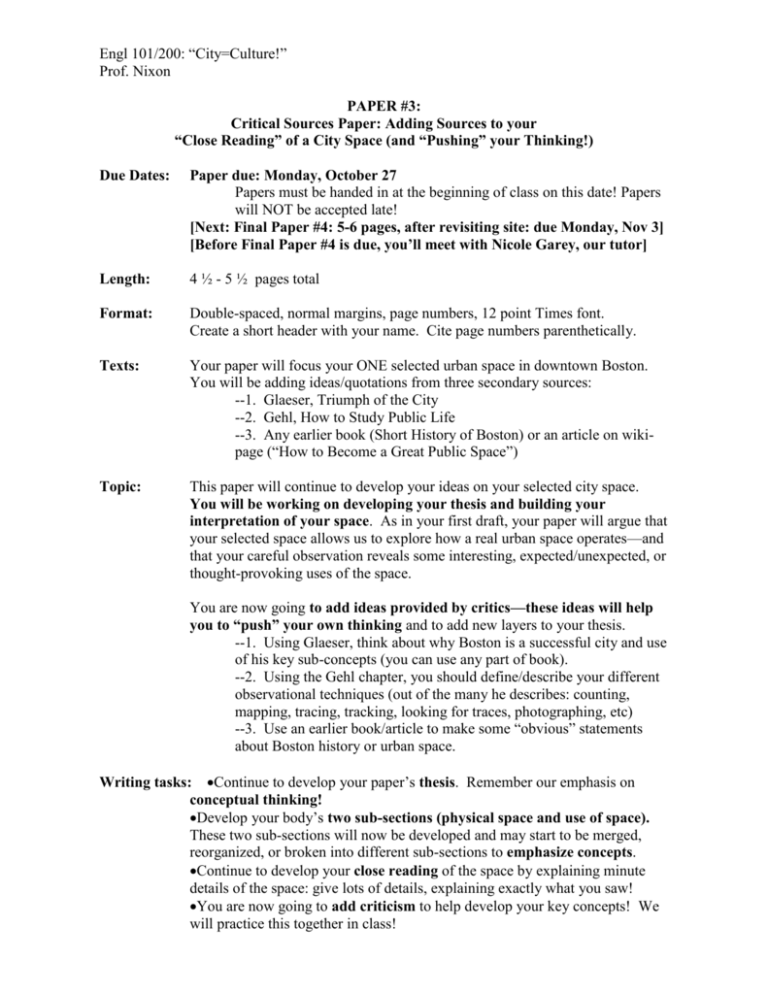
Engl 101/200: “City=Culture!” Prof. Nixon PAPER #3: Critical Sources Paper: Adding Sources to your “Close Reading” of a City Space (and “Pushing” your Thinking!) Due Dates: Paper due: Monday, October 27 Papers must be handed in at the beginning of class on this date! Papers will NOT be accepted late! [Next: Final Paper #4: 5-6 pages, after revisiting site: due Monday, Nov 3] [Before Final Paper #4 is due, you’ll meet with Nicole Garey, our tutor] Length: 4 ½ - 5 ½ pages total Format: Double-spaced, normal margins, page numbers, 12 point Times font. Create a short header with your name. Cite page numbers parenthetically. Texts: Your paper will focus your ONE selected urban space in downtown Boston. You will be adding ideas/quotations from three secondary sources: --1. Glaeser, Triumph of the City --2. Gehl, How to Study Public Life --3. Any earlier book (Short History of Boston) or an article on wikipage (“How to Become a Great Public Space”) Topic: This paper will continue to develop your ideas on your selected city space. You will be working on developing your thesis and building your interpretation of your space. As in your first draft, your paper will argue that your selected space allows us to explore how a real urban space operates—and that your careful observation reveals some interesting, expected/unexpected, or thought-provoking uses of the space. You are now going to add ideas provided by critics—these ideas will help you to “push” your own thinking and to add new layers to your thesis. --1. Using Glaeser, think about why Boston is a successful city and use of his key sub-concepts (you can use any part of book). --2. Using the Gehl chapter, you should define/describe your different observational techniques (out of the many he describes: counting, mapping, tracing, tracking, looking for traces, photographing, etc) --3. Use an earlier book/article to make some “obvious” statements about Boston history or urban space. Writing tasks: Continue to develop your paper’s thesis. Remember our emphasis on conceptual thinking! Develop your body’s two sub-sections (physical space and use of space). These two sub-sections will now be developed and may start to be merged, reorganized, or broken into different sub-sections to emphasize concepts. Continue to develop your close reading of the space by explaining minute details of the space: give lots of details, explaining exactly what you saw! You are now going to add criticism to help develop your key concepts! We will practice this together in class!


